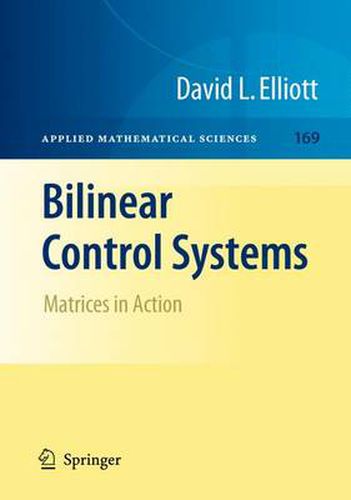Readings Newsletter
Become a Readings Member to make your shopping experience even easier.
Sign in or sign up for free!
You’re not far away from qualifying for FREE standard shipping within Australia
You’ve qualified for FREE standard shipping within Australia
The cart is loading…






This title is printed to order. This book may have been self-published. If so, we cannot guarantee the quality of the content. In the main most books will have gone through the editing process however some may not. We therefore suggest that you be aware of this before ordering this book. If in doubt check either the author or publisher’s details as we are unable to accept any returns unless they are faulty. Please contact us if you have any questions.
The mathematical theory of control became a ?eld of study half a century ago in attempts to clarify and organize some challenging practical problems and the methods used to solve them. It is known for the breadth of the mathematics it uses and its cross-disciplinary vigor. Its literature, which can befoundinSection93ofMathematicalReviews,wasatonetimedominatedby the theory of linear control systems, which mathematically are described by linear di?erential equations forced by additive control inputs. That theory led to well-regarded numerical and symbolic computational packages for control analysis and design. Nonlinear control problems are also important; in these either the - derlying dynamical system is nonlinear or the controls are applied in a n- additiveway.Thelastfourdecadeshaveseenthedevelopmentoftheoretical work on nonlinear control problems based on di?erential manifold theory, nonlinear analysis, and several other mathematical disciplines. Many of the problems that had been solved in linear control theory, plus others that are new and distinctly nonlinear, have been addressed; some resulting general de?nitions and theorems are adapted in this book to the bilinear case.
$9.00 standard shipping within Australia
FREE standard shipping within Australia for orders over $100.00
Express & International shipping calculated at checkout
This title is printed to order. This book may have been self-published. If so, we cannot guarantee the quality of the content. In the main most books will have gone through the editing process however some may not. We therefore suggest that you be aware of this before ordering this book. If in doubt check either the author or publisher’s details as we are unable to accept any returns unless they are faulty. Please contact us if you have any questions.
The mathematical theory of control became a ?eld of study half a century ago in attempts to clarify and organize some challenging practical problems and the methods used to solve them. It is known for the breadth of the mathematics it uses and its cross-disciplinary vigor. Its literature, which can befoundinSection93ofMathematicalReviews,wasatonetimedominatedby the theory of linear control systems, which mathematically are described by linear di?erential equations forced by additive control inputs. That theory led to well-regarded numerical and symbolic computational packages for control analysis and design. Nonlinear control problems are also important; in these either the - derlying dynamical system is nonlinear or the controls are applied in a n- additiveway.Thelastfourdecadeshaveseenthedevelopmentoftheoretical work on nonlinear control problems based on di?erential manifold theory, nonlinear analysis, and several other mathematical disciplines. Many of the problems that had been solved in linear control theory, plus others that are new and distinctly nonlinear, have been addressed; some resulting general de?nitions and theorems are adapted in this book to the bilinear case.